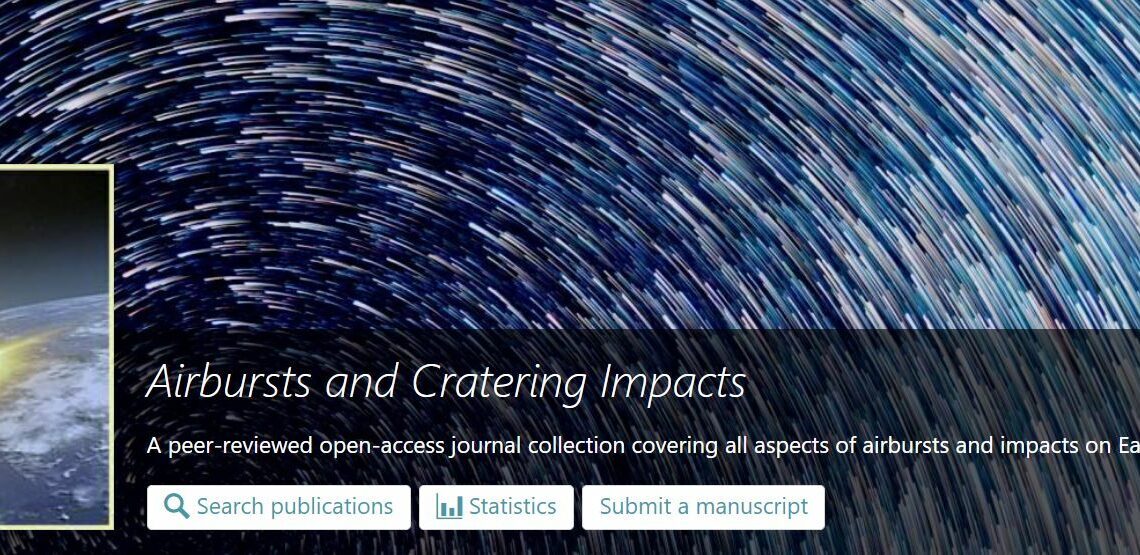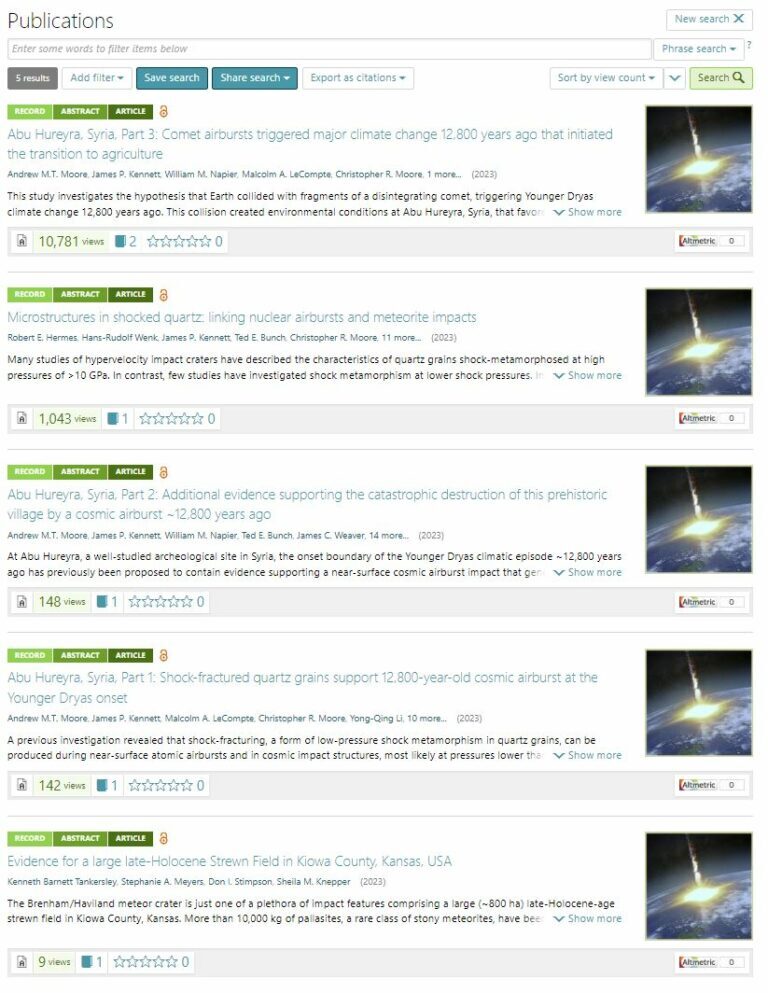As many followers of the YDI hypothesis are aware, publishing information from the CRG concerning man's most significant episode has always been difficult. Some papers have required four years to pass the so-called peer review and be published, while others, once published, have sustained repeated baseless "nuisance appeals" for their retraction. Each of the new papers this week were subjected to a rigorous review from hostile academic cliques for years.
To one degree or another, all 60+ CRG publications since 2007 have navigated this challenging system with patience and respect. In the case of these more recent submissions, for reasons we can only suspect, it had clearly become much more difficult due to the biased conduct of the editors and reviewers.
Over time it became clear that the effort required to publish in "established" but biased journals wasn't worth it, leading to the decision to start a new online journal that would be thoroughly peer-reviewed. That new journal is Airbursts and Cratering Impacts. Volume One, Issue One, of "A peer-reviewed open-access journal collection covering all aspects of airbursts and impacts on Earth by comets and asteroids."
When starting a new journal, the goal is readership, and CRG papers (when they are published) rank among the world's most popular scientific publications. A notable metric for the CRG is the number of downloads their papers receive. The Tall el-Hammam paper is arguably the most-read scientific article of popular interest in recent years, boasting 588,000 downloads. Many other CRG publications rank in the 99th percentile of readership.
The YDI subject is neither struggling nor obscure. Millions worldwide are interested in reading the primary material and data without the bias, delay and intellectual manipulation typical of established journals in our time. Given this interest, the editors of the new journal believe readership will remain high, and the number and quality of publications can increase. This change benefits science, the public, and dedicated authors in the field, challenging the traditional establishment. The new journal could mark a significant shift in the future of the peer-review process.
P.S. To accurately record readers on the publishing platform, I won't "embed" downloadable PDFs of ABCI articles in Tusk posts, like prior publications. Instead, I'll direct readers to the online journal page to be counted in the article metrics. Please explore the articles to show your interest. If sharing, please direct others to the main site. PDFs of the papers will remain archived and available here at The Bib.





Reader Comments